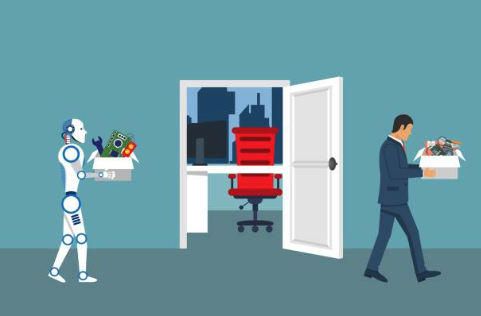
Implementing AI into hardware designs
By Chris Catterton, director of solution engineering, ONE Tech Inc.
Electronics Engineering IoT AI artificial Editor Pick intelligence4 Key steps engineers can take when deploying artificial intelligence
Artificial intelligence (AI) is becoming increasingly used within our personal or consumer devices, such as smartphones, digital assistants, even automobiles. For example, Gartner predicts that by 2022, 80 percent of smartphones shipped will have on-device AI capabilities, up from 10 percent in 2017. These capabilities include features such as ‘digital me’s’ that make the smartphones an extension of the user, user authentication, natural-language processing and more.

Source: Getty Images
But it’s the more ‘durable’ home goods that may receive a bigger boost from AI. While consumers expect their smartphone to last two to three years before they upgrade, they expect appliances such as washers and dryers, refrigerators and dishwashers to last seven to 10 years—or more. It’s here where the asset performance management (APM) side of AI pays big dividends. APM systems use AI to monitor device health, improving the reliability of physical assets while minimizing risk and reducing costs. According to Arc Advisory Group, APM solutions typically include “condition monitoring, predictive maintenance, asset integrity management, reliability-centered maintenance, and often involves technologies such as asset health data collection, visualization, and analytics.”
Raw sensor values
On all consumer appliances, energy draw is a good indicator of machine health—when energy use is trending upwards, it’s trending toward failure. AI systems can listen to bearings, belts, pulleys and other components to get more specific data on what’s failing—before it fails.
Engineers have several paths they can take when it comes to deploying AI on this type of consumer equipment and each has its own sets of benefits and challenges. A key benefit of deploying and specifically training AI locally on the asset, is that the raw sensor values that are generated from the equipment can be processed locally, and only transmitted to the cloud when a sign of failure or anomaly is detected with that asset. Without diagnostics powered by AI, owners of such goods may experience a shorter asset lifecycle, increased maintenance costs and unexpected failures.
For simplicity’s sake, let’s walk through the end-to-end process for installing AI on one type of device—a washing machine.
Installing AI
Direct install on the device. Adding AI to a washing machine could be as simple as downloading an applet using firmware over the air (FOTA) or another means. Many carriers use lightweight M2M (LWM2M), allowing the AI package to be uploaded to the LWM2M server and having it spider out to all applicable devices to reside on. Another possible implementation of AI on this consumer appliance would be building AI into the MCU that is embedded within the asset itself. When the machine is powered on for the first time, the machine learning engine goes through a training period to form a behavioral profile for the asset. Once sufficient data has passed through the machine learning engine, alerts/notifications are sent out when signs of failure and anomalies are detected. These alerts can then be passed to the asset OEM for further analysis.
Add-on to the device. The biggest challenge design engineers face in all AI projects is space. AI clients have shrunk in size, but there are still devices that cannot accommodate them. In these cases, design engineers may need to bolt on a separate device containing sensors to gain the benefits of AI for the washing machine. Such benefits include optimal asset performance, improved reliability, improved predictability, and more. Another example where there may not be enough space is in the automotive industry, where vehicle manufacturers need to make sure any AI solution fits into their telematics control unit (TCU) or be bolted on separately in an aftermarket scenario.
Developing training models
Many of today’s washing machine models have at least basic AI capabilities. For example, if a washing machine has a controller monitoring the belt and the motor, adding more AI capabilities could be as easy as piping into that already onboard controller and seeing what additional data can be derived from it. Training at the endpoint itself rather than in the cloud allows the training to account for the machine’s environment. For instance, is it an area of high humidity where one washing machine may operate differently than another in a drier area? Creating specific training models for each washing machine allows the manufacturer or carrier to spot trends across machines, as well. For example, if X happens to Machine A, and it’s similar to what happened with Machine B under similar circumstances, AI can help solve problems more quickly.
Determining who is in control
Once AI systems are installed and data is being pumped to an onboard applet, the next step is determining where that data should be sent. If an AI system prompts an alert that some measurement of the washing machine functionality is outside of normal parameters, who should receive that alert? Should it be sent to the owner’s smart home portal? To the manufacturer? To the carrier? To all three? Understanding “who owns the data” is a critically important piece of the AI process for consumer goods.
Understanding what data is missing for a use case
Manufacturers usually do a good job of incorporating of all the things that could be measured, but can often miss some outlying data. Using the washing machine example, the machine likely measures all things associated with water. However, in some environments where wear and tear is more likely, it may not be soon enough to detect water before a leak happens. If the machine also detected humidity, it could prevent a leak before it happens, saving time and money.
From washing machines to under-the-sink water filters to automobiles, consumer goods are getting smarter every day. For the designers and engineers at the manufacturers of consumer goods, the sky is the limit in terms of what can be measured, processed and reported via AI solutions. The more they can build into their products, the performance of the product will benefit and the customer experience will improve. 
———————–
Chris Catterton is director of solution engineering at ONE Tech. He has over 10 years of experience deploying global enterprise software solutions – primarily in the space of Industrial IoT, business process automation and AI.
